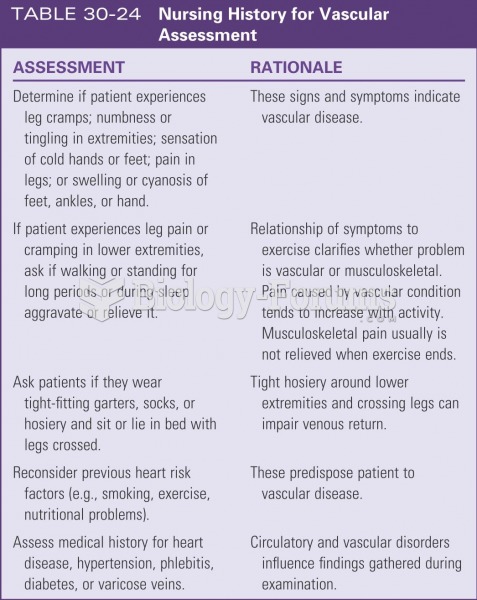|
|
|
To prove that stomach ulcers were caused by bacteria and not by stress, a researcher consumed an entire laboratory beaker full of bacterial culture. After this, he did indeed develop stomach ulcers, and won the Nobel Prize for his discovery.
Aspirin is the most widely used drug in the world. It has even been recognized as such by the Guinness Book of World Records.
In women, pharmacodynamic differences include increased sensitivity to (and increased effectiveness of) beta-blockers, opioids, selective serotonin reuptake inhibitors, and typical antipsychotics.
More than 150,000 Americans killed by cardiovascular disease are younger than the age of 65 years.
About 100 new prescription or over-the-counter drugs come into the U.S. market every year.







